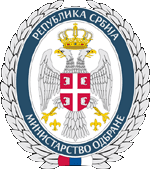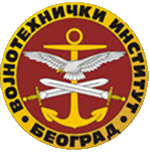|
REPUBLIC OF SERBIA MINISTRY OF DEFENCE
MINISTRY OF DEFENCE Material Resources Sector Defensive Technologies Department
|
Effect of oxide dispersion on properties of Ag-ZnO electrical contact materials
Institute of Chemistry, Technology and Metallurgy, University of Belgrade, Njegoševa 12, 11000 Belgrade, Serbia, vlada@tmf.bg.ac.rs Aleksandar R. Ćosović Faculty of Technology and Metallurgy, University of Belgrade, Karnegijeva 4, 11000 Belgrade, Serbia, a.cosovic@tmf.bg.ac.rs Ljubiša Balanović Technical Faculty in Bor, University of Belgrade, Vojske Jugoslavije 12, 19210 Bor, Serbia, ljbalanovic@tfbor.bg.ac.rs Uroš Stamenković Technical Faculty in Bor, University of Belgrade, Vojske Jugoslavije 12, 19210 Bor, Serbia, ustamenkovic@tfbor.bg.ac.rs Nemanja D. Trifunović Institute of Chemistry, Technology and Metallurgy, University of Belgrade, Njegoševa 12, 11000 Belgrade, Serbia, nemanja.trifunovic@gmail.com Duško Minić University of Priština, Faculty of Technical Sciences, Knjaza Miloša 7, 38220 Kosovska Mitrovica Serbia, dminic65@open.telekom.rs Nadežda M. Talijan Institute of Chemistry, Technology and Metallurgy, University of Belgrade, Njegoševa 12, 11000 Belgrade, Serbia, ntalijan@tmf.bg.ac.rs
Abstract: The influence of oxide dispersion on physical properties of Ag-ZnO (92:8) contact materials was illustrated by introduction of ZnO nanoparticles in silver matrix by ordinary wet mixing and by sacrificial polymer template approach. Structure and properties of the obtained nanoparticle Ag-ZnO composites are discussed and presented in comparison to conventional microparticle Ag-ZnO material. Microstructures of the prepared samples were studied on polished cross-sections using scanning electron microscopy. Density and porosity of the obtained samples were determined by standard methods while hardness measurements were carried out using a Vickers hardness tester. Electrical conductivity of the investigated materials was measured using eddy current instrument. The results of microstructural analysis confirm that by introduction of ZnO nanoparticles higher dispersion was obtained which has also resulted in higher values of hardness, density and lower porosity, particularly in case of the material prepared via template approach. Keywords: electrical contacts, Ag-ZnO, powder metallurgy, physical properties, template method.
|
|||||
|
||||||

